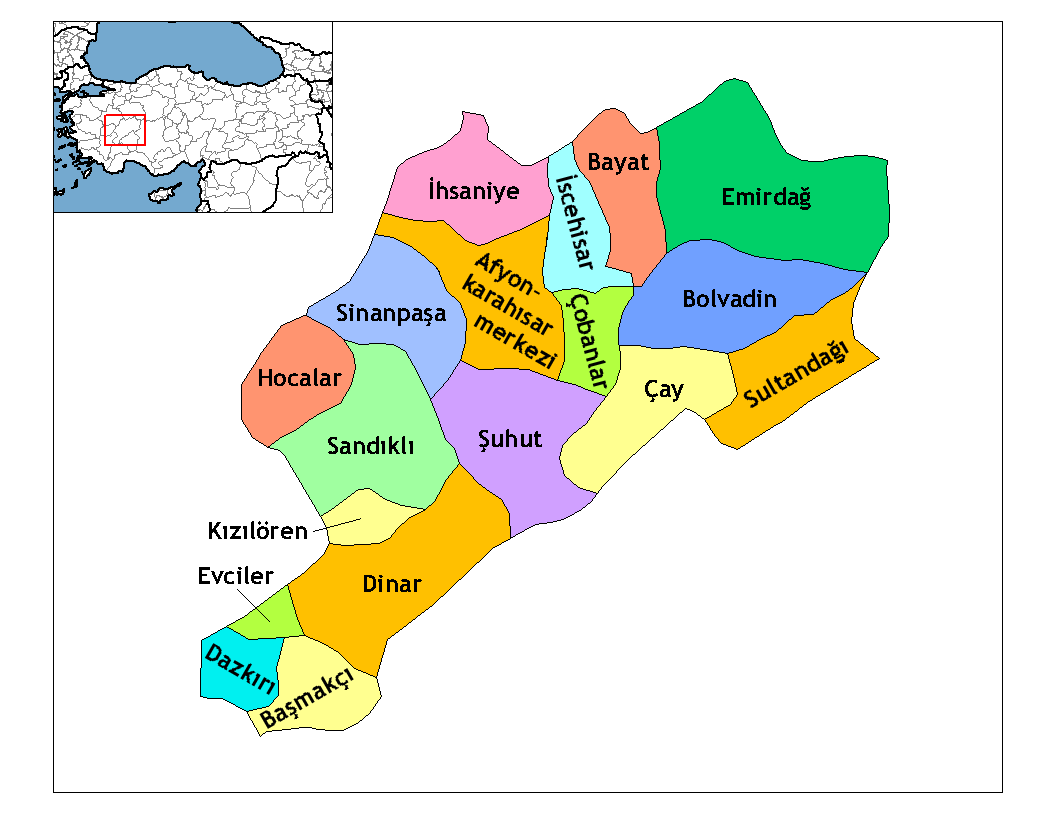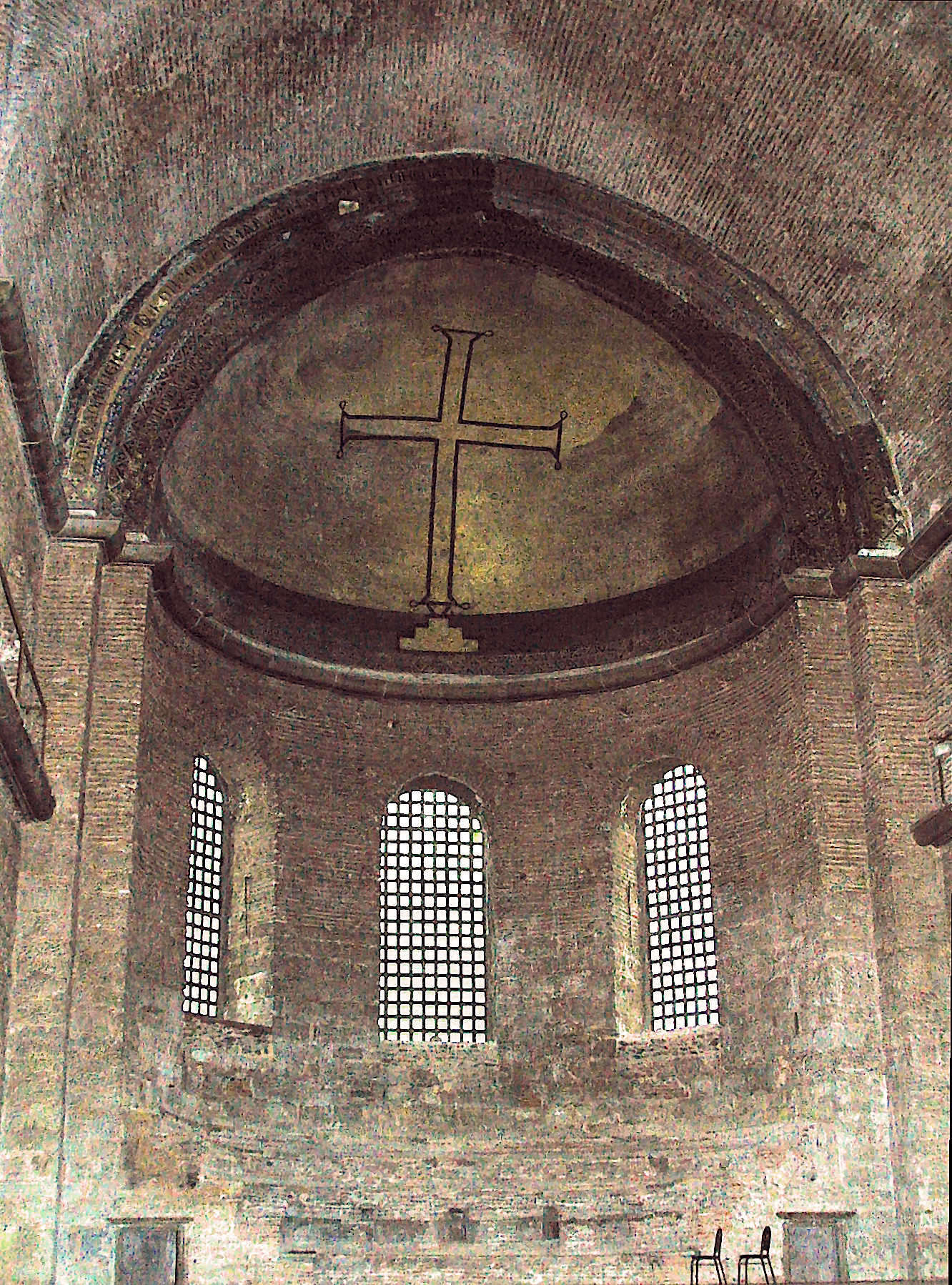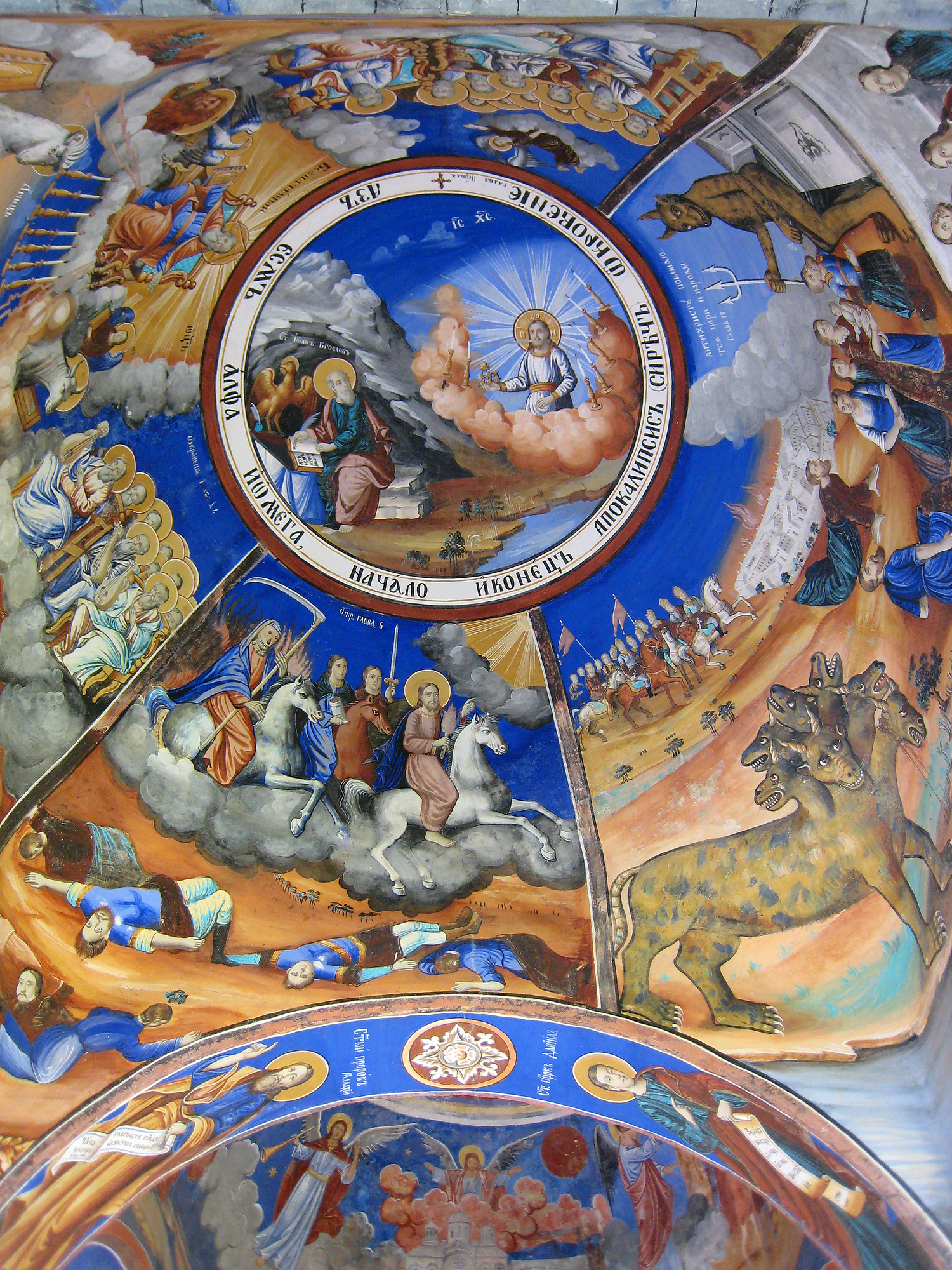|
Churches Of The Ihlara Valley
The Ihlara Valley (or Peristrema Valley; Turkish ''Ihlara Vadisi'') is a canyon which is 15 km long and up to 150 m deep in the southwest of the Turkish region of Cappadocia, in the municipality of Güzelyurt, Aksaray Province. The valley contains around 50 rock-hewn Christian churches and numerous rock-cut buildings. Etymology The earlier Greek name, ''Peristrema'' (Περιστρημα; winding round) of the village of Belisarma which is located about halfway along the valley from Ihlara to Selime, gave its name to the valley as well. Development and location The canyon was formed in prehistoric times by the Melendiz River. It lies between the villages of Ihlara in the southeast and Selime in the northwest. At the north end of the village of Ihlara, there is a stairway with almost 400 steps, which descends over 100 m down into the canyon. From the 7th century AD, the valley was settled by Byzantine monks who dug their houses and churches out of the tuf ... [...More Info...] [...Related Items...] OR: [Wikipedia] [Google] [Baidu] |
İlçe
The Provinces of Turkey, 81 provinces of Turkey are divided into 973 districts (''ilçeler''; sing. ''ilçe''). In the Ottoman Empire and in the early Turkish Republic, the corresponding unit was the ''qadaa, kaza''. Most provinces bear the same name as their respective provincial capital (political), capital districts. However, many urban provinces, designated as greater municipalities, have a center consisting of multiple districts, such as the provincial capital of Ankara Province, Ankara province, Ankara, The City of Ankara, comprising nine separate districts. Additionally three provinces, Kocaeli, Sakarya, and Hatay have their capital district named differently from their province, as İzmit, Adapazarı, and Antakya respectively. A district may cover both rural and urban areas. In many provinces, one district of a province is designated the central district (''merkez ilçe'') from which the district is administered. The central district is administered by an appointed pr ... [...More Info...] [...Related Items...] OR: [Wikipedia] [Google] [Baidu] |
Byzantine Iconoclasm
The Byzantine Iconoclasm () are two periods in the history of the Byzantine Empire when the use of religious images or icons was opposed by religious and imperial authorities within the Ecumenical Patriarchate (at the time still comprising the Roman-Latin and the Eastern-Orthodox traditions) and the temporal imperial hierarchy. The First Iconoclasm, as it is sometimes called, occurred between about 726 and 787, while the Second Iconoclasm occurred between 814 and 842. According to the traditional view, Byzantine Iconoclasm was started by a ban on religious images promulgated by the Byzantine Emperor Leo III the Isaurian, and continued under his successors. It was accompanied by widespread destruction of religious images and persecution of supporters of the veneration of images. The Papacy remained firmly in support of the use of religious images throughout the period, and the whole episode widened the East–West Schism, growing divergence between the Byzantine and Carolingian Em ... [...More Info...] [...Related Items...] OR: [Wikipedia] [Google] [Baidu] |
Constantine VII
Constantine VII Porphyrogenitus (; 17 May 905 – 9 November 959) was the fourth Byzantine emperor of the Macedonian dynasty, reigning from 6 June 913 to 9 November 959. He was the son of Emperor Leo VI and his fourth wife, Zoe Karbonopsina, and the nephew of his predecessor Alexander. Most of his reign was dominated by co-regents: from 913 until 919 he was under the regency of his mother, while from 920 until 945 he shared the throne with Romanos Lekapenos, whose daughter Helena he married, and his sons. Constantine VII is best known for the '' Geoponika'' (τά γεοπονικά), an important agronomic treatise compiled during his reign, and three, perhaps four, books; (bearing in Greek the heading Πρὸς τὸν ἴδιον υἱὸν Ῥωμανόν), (Περὶ τῆς Βασιλείου Τάξεως), '' De Thematibus'' (Περὶ θεμάτων Άνατολῆς καὶ Δύσεως), and '' Vita Basilii'' (Βίος Βασιλείου), though his authorship of ... [...More Info...] [...Related Items...] OR: [Wikipedia] [Google] [Baidu] |
Jacinth
Jacinth (, ) or hyacinth () is a yellow-red to red-brown variety of zircon used as a gemstone. In Exodus 28:19, one of the precious stones set into the ''hoshen'' (the breastplate worn by the High Priest of Israel) is called, in Hebrew, '' leshem'', which is often translated into English as "jacinth". The true identity of this stone has been a source of confusion since at least the first century; the modern identification of ''leshem'' with jacinth seems to have been popularised by Martin Luther, who may in turn have been following a fourth-century tradition. In Revelation 21:20, one of the foundation stones of the New Jerusalem is hyacinth (Greek: ''hyakinthos''). However, ''Strong's Concordance'' and ''Thayer's Greek Lexicon'' describe this as a stone of the colour of the hyacinth plant, i.e. dark blue. The stone intended may be the sapphire Sapphire is a precious gemstone, a variety of the mineral corundum, consisting of aluminium oxide () with trace amounts of ele ... [...More Info...] [...Related Items...] OR: [Wikipedia] [Google] [Baidu] |
Narthex
The narthex is an architectural element typical of Early Christian art and architecture, early Christian and Byzantine architecture, Byzantine basilicas and Church architecture, churches consisting of the entrance or Vestibule (architecture), vestibule, located at the west end of the nave, opposite the church's main altar. Traditionally the narthex was a part of the church building, but was not considered part of the church proper. In early Christian churches the narthex was often divided into two distinct parts: an esonarthex (inner narthex) between the west wall and the body of the church proper, separated from the nave and aisles by a wall, arcade (architecture), arcade, colonnade, screen, or rail, and an external closed space, the exonarthex (outer narthex), a court in front of the church façade delimited on all sides by a colonnade as in the first Old St. Peter's Basilica, St. Peter's Basilica in Rome or in the Basilica of Sant'Ambrogio in Milan. The exonarthex may have bee ... [...More Info...] [...Related Items...] OR: [Wikipedia] [Google] [Baidu] |
Apse
In architecture, an apse (: apses; from Latin , 'arch, vault'; from Ancient Greek , , 'arch'; sometimes written apsis; : apsides) is a semicircular recess covered with a hemispherical Vault (architecture), vault or semi-dome, also known as an ''exedra''. In Byzantine architecture, Byzantine, Romanesque architecture, Romanesque, and Gothic architecture, Gothic Architecture of cathedrals and great churches, Christian church architecture, church (including cathedral and abbey) architecture, the term is applied to a semi-circular or polygonal termination of the main building at the liturgical east and west, liturgical east end (where the altar is), regardless of the shape of the roof, which may be flat, sloping, domed, or hemispherical. Smaller apses are found elsewhere, especially in shrines. Definition An apse is a semicircular recess, often covered with a hemispherical vault. Commonly, the apse of a church, cathedral or basilica is the semicircular or polygonal termination to the ... [...More Info...] [...Related Items...] OR: [Wikipedia] [Google] [Baidu] |
Constantine The Great
Constantine I (27 February 27222 May 337), also known as Constantine the Great, was a Roman emperor from AD 306 to 337 and the first Roman emperor to convert to Christianity. He played a Constantine the Great and Christianity, pivotal role in elevating the status of Christianity in Rome, Edict of Milan, decriminalising Christian practice and ceasing Persecution of Christians in the Roman Empire, Christian persecution. This was a turning point in the Historiography of the Christianization of the Roman Empire, Christianisation of the Roman Empire. He founded the city of Constantinople (modern-day Istanbul) and made it the capital of the Empire, which it remained for over a millennium. Born in Naissus, a city located in the Roman province, province of Moesia Superior (now Niš, Serbia), Constantine was the son of Flavius Constantius, a Roman army officer from Moesia Superior, who would become one of the four emperors of the Tetrarchy. His mother, Helena, mother of Constantin ... [...More Info...] [...Related Items...] OR: [Wikipedia] [Google] [Baidu] |
Helena, Mother Of Constantine I
Flavia Julia Helena (; , ''Helénē''; – 330), also known as Helena of Constantinople and in Christianity as Saint Helena, was an ''List of Augustae, Augusta'' of the Roman Empire and mother of Emperor Constantine the Great. She was born in the lower classes''Anonymus Valesianus'1.2 "Origo Constantini Imperatoris". traditionally in the city of Drepanon, Bithynia, in Asia Minor, which was renamed Helenopolis (Bithynia), Helenopolis. Helena ranks as an important figure in the history of Christianity. In her final years, she made a religious tour of Syria Palaestina and Jerusalem, during which ancient tradition claims that she discovered the True Cross. The Eastern Orthodox Church, Catholic Church, Oriental Orthodox Churches, Anglican Communion, and the Lutheranism, Lutheran Church revere her as a saint. Early life Though Helena's birthplace is not known with certainty, Helenopolis (Bithynia), Helenopolis, then Drepanon, in Bithynia, following Procopius, is the one su ... [...More Info...] [...Related Items...] OR: [Wikipedia] [Google] [Baidu] |
Apocalypse
Apocalypse () is a literary genre originating in Judaism in the centuries following the Babylonian exile (597–587 BCE) but persisting in Christianity and Islam. In apocalypse, a supernatural being reveals cosmic mysteries or the future to a human intermediary. The means of mediation include dreams, visions and heavenly journeys, and they typically feature symbolic imagery drawn from the Jewish Bible, cosmological and (pessimistic) historical surveys, the division of time into periods, esoteric numerology, and claims of ecstasy and inspiration. Almost all are written under pseudonyms (false names), claiming as author a venerated hero from previous centuries, as with the Book of Daniel, composed during the 2nd century BCE but bearing the name of the legendary Daniel from the 6th century BCE. Eschatology (from Greek ''eschatos'', last) concerns expectations of the end of the present age. Thus, apocalyptic eschatology is the application of the apocalyptic world-view to the e ... [...More Info...] [...Related Items...] OR: [Wikipedia] [Google] [Baidu] |
Serpents In The Bible
Serpents () are referred to in both the Hebrew Bible and the New Testament. The Serpent (symbolism), symbol of a serpent or snake played important roles in the religious traditions and cultural life of ancient Greece, Ancient Egypt, Egypt, Mesopotamia, and Canaan. The serpent was a symbol of evil power and Chaos (cosmogony), chaos from the underworld as well as a symbol of fertility, life, healing, and rebirth. ''Nāḥāš'' (), Hebrew for "snake", is also associated with divination, including the Semitic root, verb form meaning "to practice divination or fortune-telling". ''Nāḥāš'' occurs in the Torah to identify the serpent in the Garden of Eden. Throughout the Hebrew Bible, it is also used in conjunction with ''seraph'' to describe vicious serpents in the wilderness]. The ''Tannin (monster), tannin'', a dragon monster, also occurs throughout the Hebrew Bible. In the Book of Exodus, the staves of Moses and Aaron are turned into serpents, a ''nāḥāš'' for Moses, a ''tann ... [...More Info...] [...Related Items...] OR: [Wikipedia] [Google] [Baidu] |
Ascension Of Jesus
The Ascension of Jesus (anglicized from the Vulgate ) is the Christianity, Christian and Islamic belief that Jesus entering heaven alive, ascended to Heaven. Christian doctrine, as reflected in the major Christian creeds and confessional statements, holds that Jesus ascended after his Resurrection of Jesus, resurrection, where he was exaltation of Jesus, exalted as Lord and Christ (title), Christ, session of Christ, sitting at the right hand of God. Schools of Islamic theology, Islamic doctrine holds that Jesus directly ascended to heaven without dying or resurrecting. The Gospels and other New Testament writings imply resurrection and exaltation as a single event. The ascension is "more assumed than described," and only Luke–Acts, Luke and Acts contain direct accounts of it, but with different chronologies. In Christian art, the ascending Jesus is often shown blessing an earthly group below him, signifying the entire Church. The Feast of the Ascension is celebrated on the 40t ... [...More Info...] [...Related Items...] OR: [Wikipedia] [Google] [Baidu] |
Cross-in-square
A cross-in-square or crossed-dome floor plan was the dominant form of church architecture in the middle and late Byzantine Empire. It featured a square centre with an internal structure shaped like a cross, topped by a dome. Architecture Architectural form A cross-in-square church is centered around a quadratic cella, naos (the 'square') which is divided by four columns or piers into nine bay (architecture), bays (divisions of space). The inner five divisions form the shape of a quincunx (the 'cross'). The central bay is usually larger than the other eight, and is crowned by a dome which rests on the columns. The four rectangular bays that directly adjoin this central bay are usually covered by barrel vaults; these are the arms of the "cross" which is inscribed within the "square" of the naos. The four remaining bays in the corner are usually Groin vault, groin-vaulted. The spatial hierarchy of the three types of bay, from the largest central bay to the smallest corner bays, i ... [...More Info...] [...Related Items...] OR: [Wikipedia] [Google] [Baidu] |











